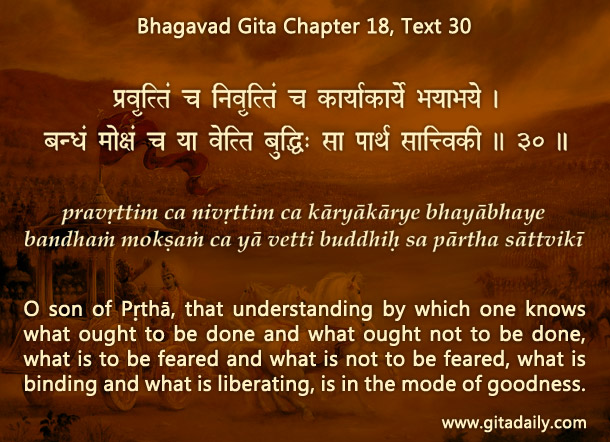Why do we sometimes do things that we didn’t intend to do, things that we in fact had resolved not to do?
For explaining the working of our inner world, the Upanishads often use the chariot-body analogy. The body is like a chariot, the soul like the passenger, the senses like the horses, the mind like the reins and the intelligence like the charioteer.
A standard preliminary metaphor for explaining the body-soul relationship is the car-driver setup. The body is like the car and the soul like the driver. Whereas the car-body analogy focuses on the need for a non-material activating principle – the soul – the chariot-body analogy focuses on the mechanism by which that principle activates the material body.
Though the senses being made of matter are material and insentient, the chariot-body metaphor compares them to something living: horses. Why is that? Because the senses have their conditionings that make them appear alive. We all experience that we sometimes get pulled by our senses towards forms of indulgence that violate the principles we hold sacred. Such actions are akin to the horses taking the chariot somewhere other than the passenger’s desired destination. This forcefulness of the senses in dragging us towards unwise actions is highlighted by comparing them with horses.
Just as the horses pulling a chariot need to be controlled by a vigilant charioteer, we need to control our bodily senses with a vigilant intelligence. The Bhagavad-gita (18.30) states that such discernment is characteristic of intelligence in the mode of goodness.
By internalizing Gita wisdom and purifying ourselves through yoga practice, we can raise our consciousness from the lower modes to goodness and beyond to transcendence. With the resulting vigilant intelligence, we can resist the senses and progress towards our all-round well-being.
To know more about this verse, please click on the image
Explanation of article:
Podcast:


intelligence always curbs down vice impulse of emotions